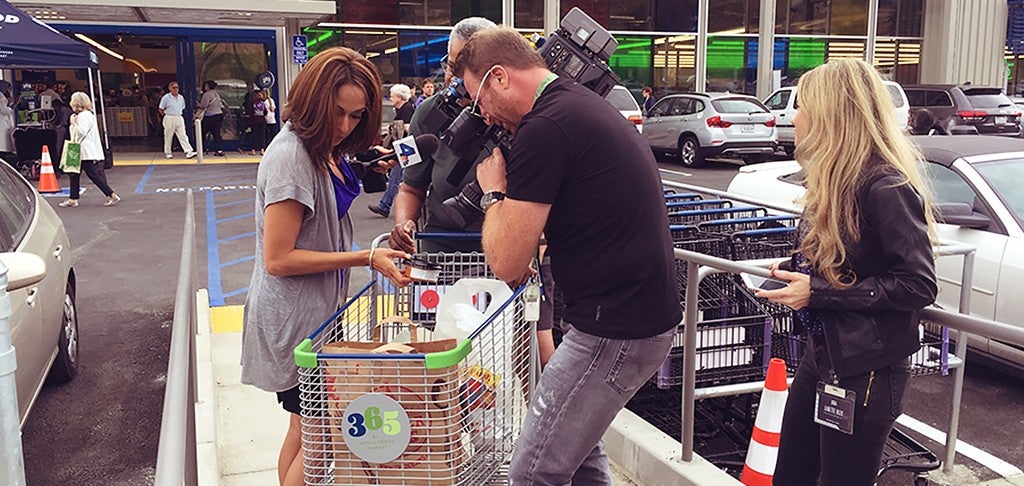Approaching 365, the new grocery store brand by Whole Foods which opened its first store in Silver Lake, Los Angeles on Wednesday, I can hear Lorde’s overplayed hit “Royals” emanating from the DJ booth set up in the parking lot. “That kind of luxe just ain’t for us. / We crave a different kind of buzz.”
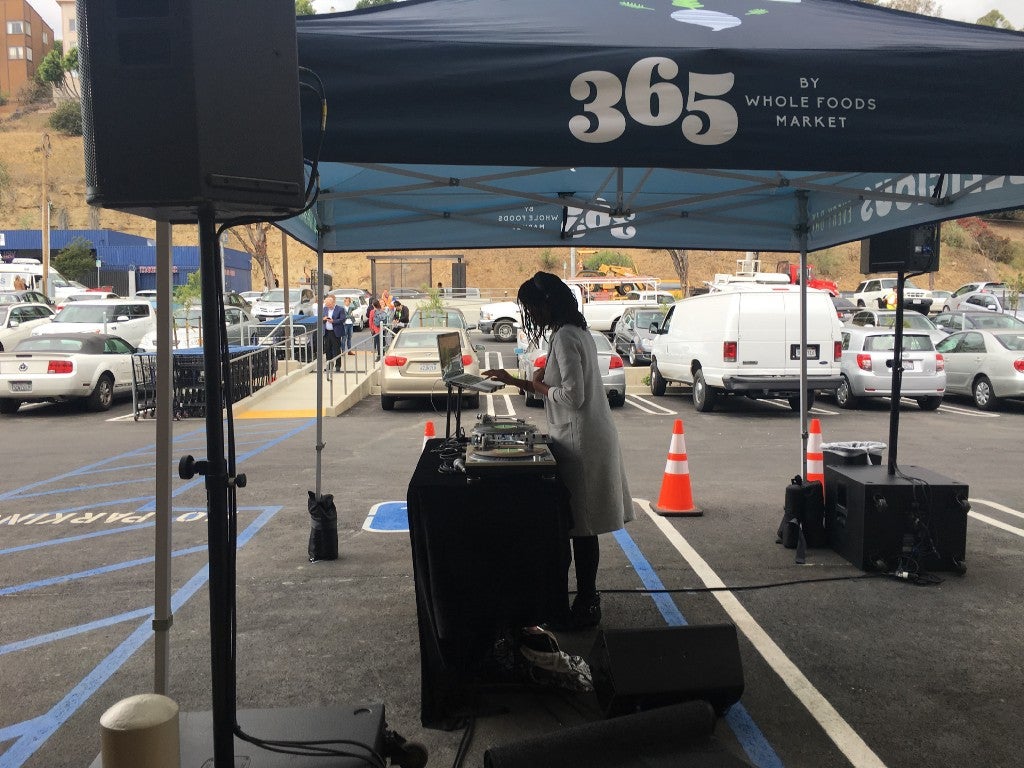
A song about not feeling rich enough and being proud of that feeling seemed to capture the spirit of the day. As does a “different kind of buzz”—with hordes of enthusiastic shoppers braving an overpacked parking lot for a first look at what’s on offer and TV reporters invasively shoving cameras into people’s grocery bags as if they expect to find something other than well-priced food. But inside, the merchandise feels less like it’s being marketed toward Whole Foods defectors, and more like it’s for anyone.
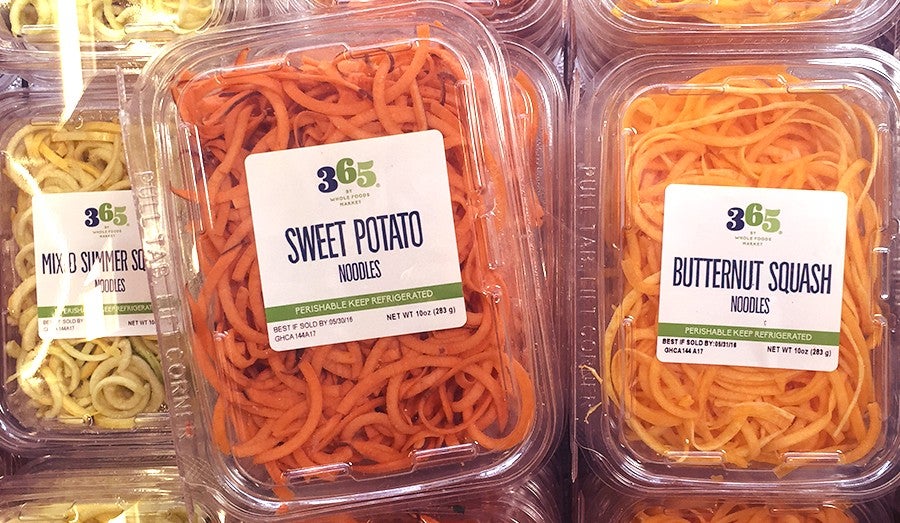
The pretentiousness of Whole Foods branding has been stripped away — the produce doesn’t tell you a story about where it came from (an aesthetic Michael Pollan calls “supermarket pastoral”), and many of the products are just the utilitarian, in-house 365 (though plenty of other companies are on the shelves here, too). As the name suggests, the 365 concept is built around everyday eating and the new basics that might appeal to health-conscious young people, in particular.
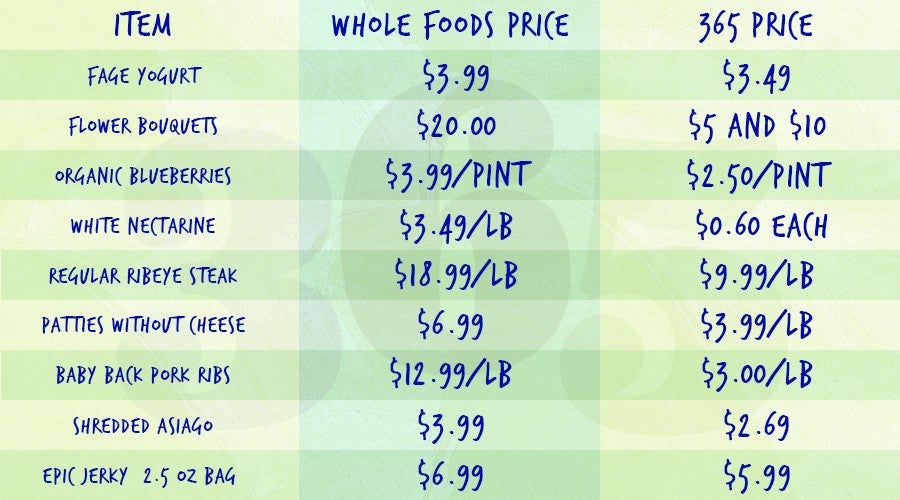
You could easily pull together a dinner with items like prepackaged squash noodles or pre-cooked quinoa if you’re gluten-free, paleo or vegetarian and don’t want to deal with a food-processor or even boil water. There’s also a bountiful selection of meat and produce that won’t break the bank.
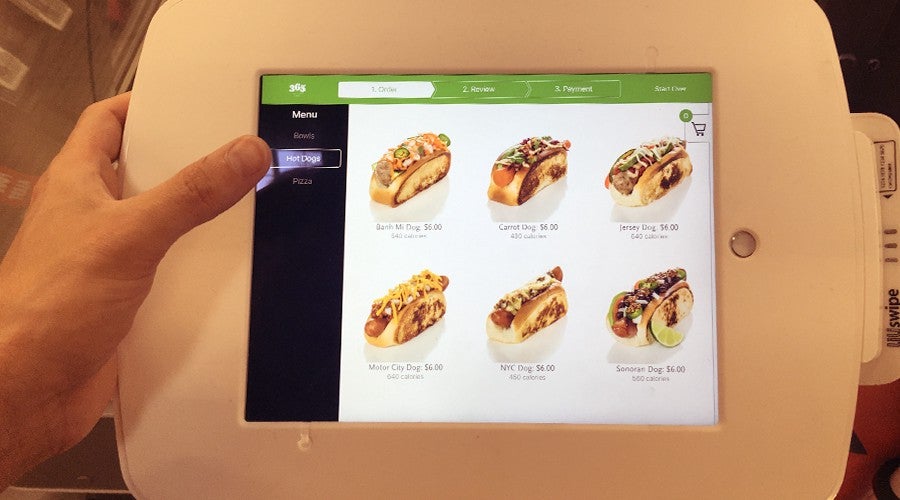
Many of the elements that make Whole Foods feel high-end (and cost so much) have been stripped away. There are no showy counters full of imported meats, olive bars or luxe prepared foods. If you want lunch there are salad bars and pre-made sushi, of course. Or you could go with a dressed-up $6 hot dog ordered via touchscreen.
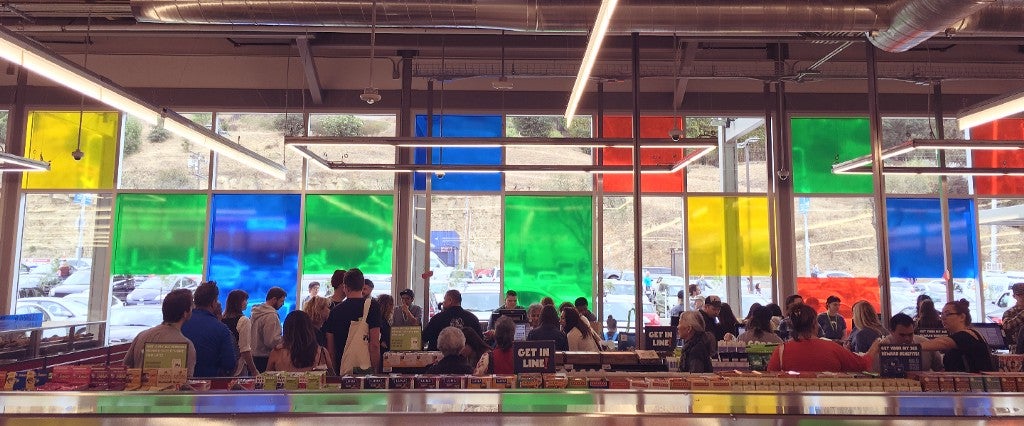
That minimalism extends to the space as well. The barely dressed up warehouse vibe feels, dare I say, Costco-ish. But all of the shelving is kept low, so you never feel like you’re trapped in an aisle, and you can see all around, as if you were shopping in a big open-plan office.
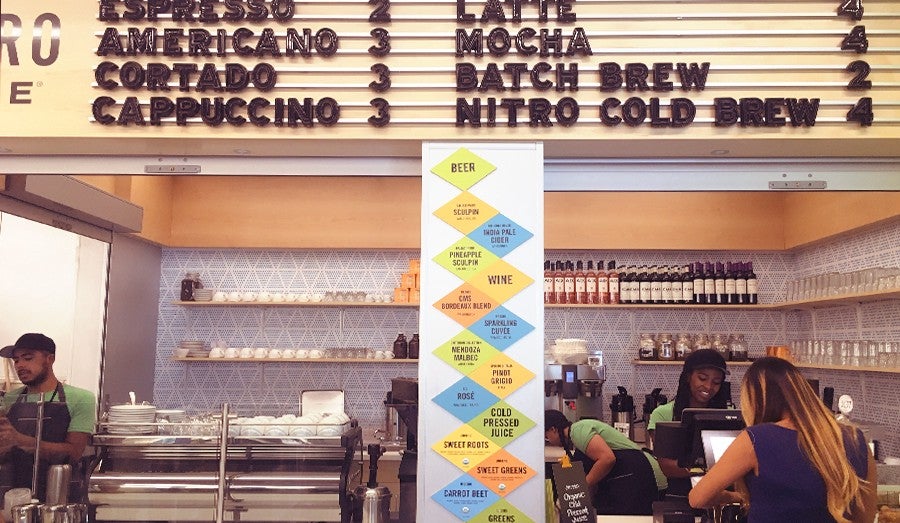
In the corner, the beverage counter offers a touch of Whole Foods realness with moderately expensive coffee, wine, beer and juice. It’s an admission that today’s shoppers can’t live without their beverages and that expensive coffee is the new cheap coffee. Presumably, this reflects the reality that drinks are huge money makers for high-end grocery stores, so that’s why they’re here, too.
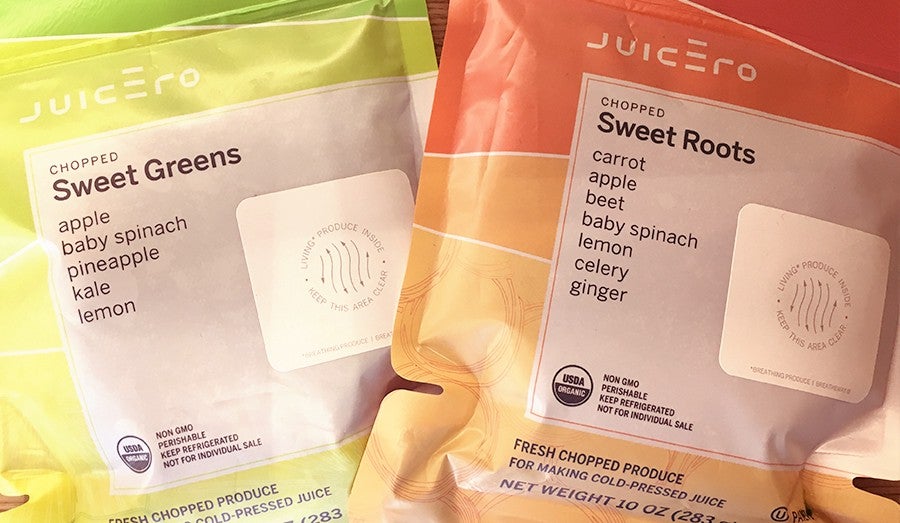
On opening day, juice was was provided by Juicero, the Keurig of cold-pressed for at-home juicers. As I pressed my bag of carrot-apple-etc. juice, using its machine, the Juicero employee told me this was just a promotional pop-up and that 365 would eventually have its own juices (so perhaps other purveyors of experimental beverages will come through this space, too).
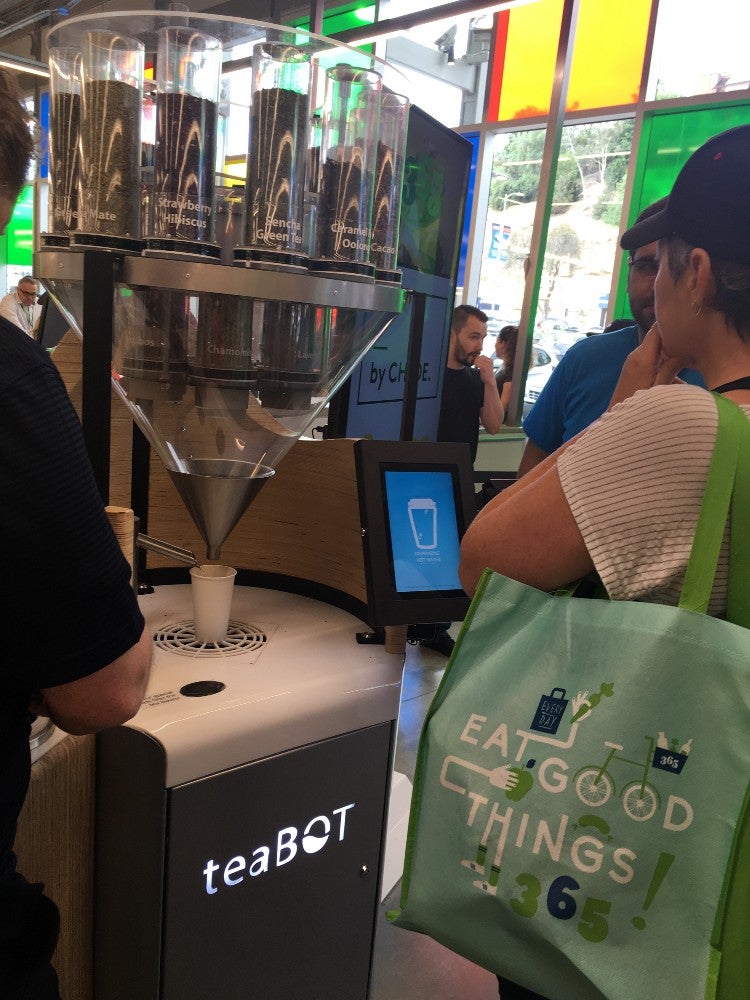
Other technology is more permanent and just as Instagram-worthy, including the TeaBot, where tea options are chosen via screen. Similar touch-screen tech permeates the store, allowing you to weigh bulk items and produce and print barcodes to speed up checkouts. This, conveniently for 365, allows the store to hire fewer workers (100 as opposed to 250 to 500 employees at a typical Whole Foods, reports the Los Angeles Times).
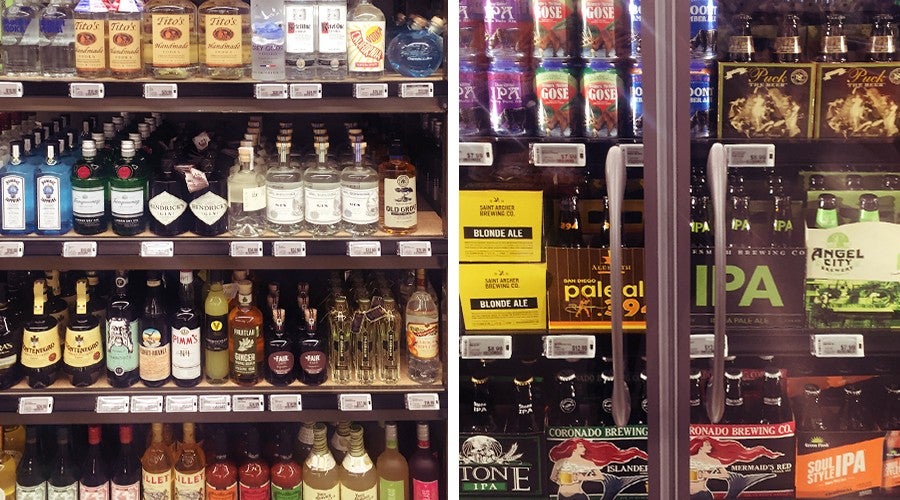
Speaking of beverages, 365 sells liquor, which seems like a direct assault on Trader Joe’s, the California-based retailer that has long relied on booze to make twice as much revenue per square foot of retail space as Whole Foods. Meanwhile, Whole Foods’ stock prices fell 45 percent over the course of 2015, which explains why they might want to lose the reputation that their check-out counter comes for your whole paycheck.
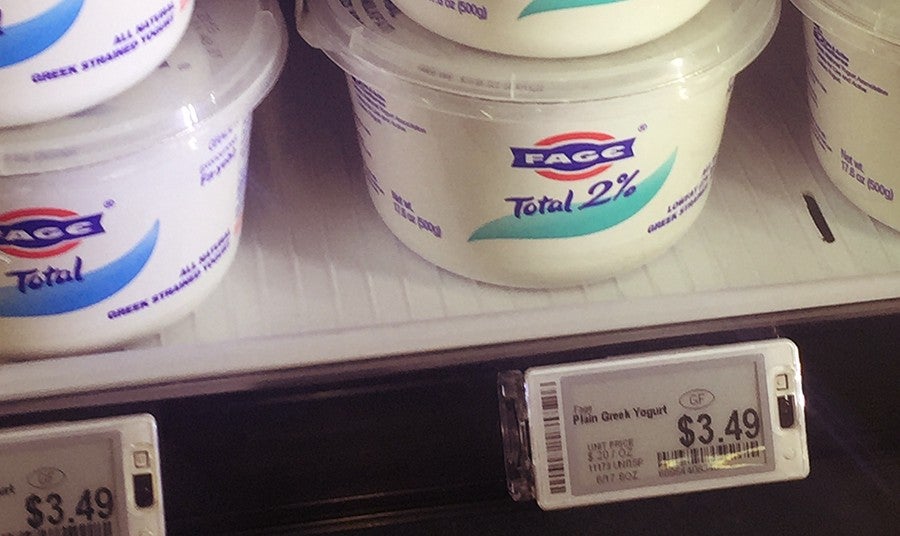
Still, touches of luxury subtly penetrate the 365 experience. The store offers Greek yogurt and other fancy, newer essentials by popular brands like Epic (known for its jerky and meat-based protein bars).

While I didn’t have the pleasure of being interviewed on camera about my shopping trip, I would’ve gladly shouted-out the whole experience with an enthusiastic “Yas!” to local audiences. Soon, the rest of the country will get to join in; 365 plans to march into 10 more locations next year, bringing with it one potential answer to the question of how to eat quickly, healthfully and (relatively) cheaply in America.
Zak Stone is MEL’s executive editor.
More food on MEL:
- Eating Too ‘Clean’ Can Kill You
- There’s No Shame in Ordering Fast Food on Postmates
- Can Roy Choi Disrupt Fast Food?
